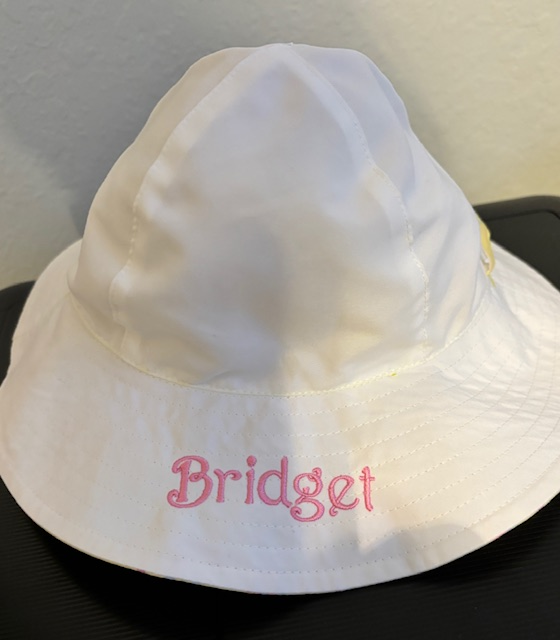The Art of Personalized Needlework: Unlocking the Secrets to Creating Distinct and Remarkable Layouts
Embroidery, a craft soaked in tradition and creativity, holds within its detailed stitches the power to transform material right into a canvas of distinct expression. The secrets to producing customized embroidery layouts that mesmerize the eye and leave a long lasting impression depend on a delicate balance of technique, creative thinking, and attention to detail. As we dive into the world of customized embroidery, we reveal the nuanced interaction in between thread choice, sew complexity, and style customization that raises a plain garment to an artwork. Join us on a journey through the art of custom-made embroidery as we unwind the mysteries behind crafting absolutely unforgettable and unique creations.
Selecting the Right Embroidery Threads
When choosing needlework strings, what vital aspects should you think about to make certain the ideal outcomes for your custom designs? The choice of embroidery thread is critical in figuring out the final end result of your embroidered design.
In addition, the weight or thickness of the thread plays a considerable role in the appearance of the embroidery. Thicker strings can include measurement and structure to your style, while finer strings are optimal for complex details and tiny text. Additionally, thinking about the shade fastness and washability of the thread is important to make certain that your custom-made styles keep their top quality and vibrancy with time. By carefully reviewing these aspects and picking top quality threads that fulfill your certain demands, you can improve the aesthetic appeal and long life of your embroidered creations.
Discovering Different Stitch Techniques
To delve right into the realm of 'Checking out Different Stitch Techniques', one should realize the details and nuances that each stitching approach offers the art of embroidery. Various stitch strategies not just add aesthetic passion but also add to the overall appearance and dimension of the design. One preferred stitch technique is the satin stitch, which includes closely stuffed parallel stitches to produce a smooth and shiny surface area, ideal for filling out forms and producing vibrant outlines.
On the various other hand, the backstitch is a flexible technique commonly utilized for describing and adding fine information. It entails sewing in reverse to develop a solid line of embroidery. Furthermore, the French knot stitch adds a tactile component to designs, excellent for creating distinctive accents like flower facilities or attractive touches.
Checking out various stitch strategies enables embroiderers to have fun with light, darkness, and depth within their styles, boosting the visual charm and imaginative quality of their embroidery jobs. By mastering different sewing site methods, one can unlock countless possibilities for producing distinct and remarkable custom needlework pieces.
Incorporating Personalized Style Elements
Having discovered the intricacies of various stitch techniques such as the satin stitch, backstitch, and French knot, the emphasis now changes towards incorporating personalized layout components in custom-made needlework projects. Individualized style elements play a crucial duty in making needlework jobs genuinely unique and unforgettable.
Another means to integrate customized layout aspects is by consisting of signs or themes that hold unique significance to the recipient or reflect their interests and personality. For example, integrating a favored flower, pet, or hobby-related symbol can make the embroidery layout much more meaningful and tailored. In addition, choosing colors that reverberate with the recipient or line up with the intended style can even more enhance the customization of the needlework job.
Grasping the Art of Shade Coordination

One secret facet of color control is comprehending shade concept. This includes understanding how different shades interact with each other, the feelings they communicate, and just how they can be combined to produce aesthetically attractive layouts. By applying color concept principles, embroiderers can develop harmonious shade palettes that boost the general look of the layout.
Additionally, taking note of comparison is vital in shade control. Making use of contrasting colors can aid certain aspects of the design pop, enhance readability, and produce a visually vibrant embroidery item. By grasping the art of shade coordination, embroiderers can raise their designs and create unforgettable items that reverberate with clients and customers alike.
Enhancing Appearance With Advanced Needlework Stitches
French knots, as an example, are excellent for adding small, elevated dots to your layout, simulating the appearance of grains custom tailored pants or developing a textured surface. Bullion knots, on the other hand, can be utilized to develop twisted, ropelike aspects that add a luxurious feel to the embroidery. Seed stitching includes small, scattered stitches that can complete areas with a multicolor structure, while turkey work produces fluffy, dimensional accents similar to animal fur or vegetation. Experimenting with these advanced embroidery stitches permits you to push the limits of conventional embroidery and create really special and aesthetically enticing structures in your styles.
Final Thought
To conclude, the art of customized embroidery includes a combination of choosing the appropriate threads, checking out numerous stitch methods, including customized layout aspects, grasping shade coordination, and improving appearance with advanced stitches. By comprehending and implementing these essential aspects, embroiderers can develop unique and unforgettable styles that display their creative thinking and skill. Embroidery lovers can open the keys to creating attractive and bespoke pieces that stand out and leave an enduring impact.